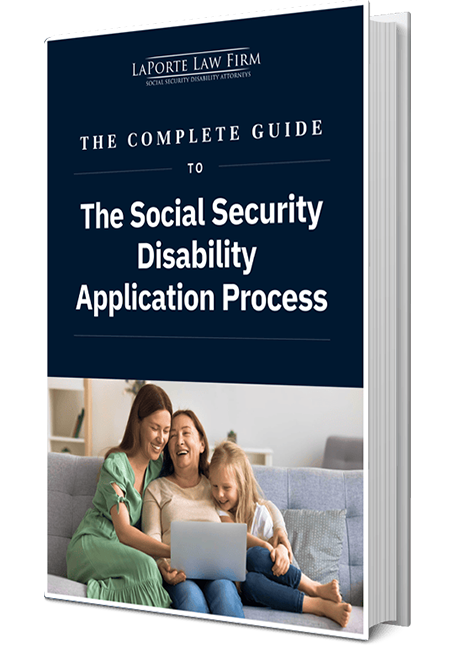
If you’ve ever wondered how to make the most out of Social Security spousal benefits, you’re not alone. These benefits are a critical source of income for many retirees, yet understanding them can be quite complex. It’s important to understand the intricacies of these benefits, especially historical loopholes that were used to maximize payouts until recent legislative changes, but are no longer viable strategies due to the Bipartisan Budget Act of 2015Under this law, if you turn 62 before January 2, 2016, and you are eligible for benefits both as a retired worker and as a spouse (or divorced spouse) in the first month you want your benefits to begin and not yet full retirement age, you must apply for both benefits (known as deemed filing). You will receive the higher of the two benefits.
If you turn 62 on or after January 2, 2016, and you are eligible for benefits both as a retired worker and as a spouse (or divorced spouse) in the first month you want your benefits to begin, then deemed filing applies at age 62 and extends to full retirement age and beyond. In addition, deemed filing may occur in any month after becoming entitled to retirement benefits.
Despite recent changes closing certain loopholes, the potential for strategic claiming still exists, particularly for those born before January 2, 1954. Eligibility criteria, divorce impact, and delayed claiming strategies are all factors that determine how much a couple can receive in retirement.
This article will guide you through the maze of Social Security spousal benefits, explaining their evolution, the calculation methods, and strategies for maximizing these benefits. With insights into recent legislative changes, application tips, and available tools, you’ll learn how to navigate the system more effectively, ensuring you don’t miss out on what you’re entitled to.
Understanding Social Security Spousal Benefits
Social Security spousal benefits provide significant financial support for married, divorced, and widowed individuals. This system allows a spouse, who might have a lesser lifetime earning record, to receive a portion of their partner’s retirement benefits. Social Security spousal benefits were designed to support the lower-earning spouse, often compensating for years sacrificed for family and caregiving duties. When a spouse provides caregiving duties for children while sacrificing their prime earning years to take care of the family, they often lose out on the opportunity to fund their own retirement account and pay FICA taxes through earnings under their own Social Security number.
Check out the Social Security website and create a My SSA account to find out if you qualify.
What are spousal benefits?
Spousal benefits allow a qualified individual to receive up to 50% of their partner’s Social Security benefits. This is especially beneficial for couples where one spouse had little or no earnings history, as it ensures both partners can receive a steady retirement income. To be eligible, the spouse seeking benefits must be at least 62, and the primary earner must have already initiated their retirement benefits, and have a lower benefit than the primary earner.
Eligibility criteria for spousal benefits
To qualify for spousal benefits, one must be at least 62 or have a qualifying child who is under 16 and receives disability benefits. For married couples, the marriage must typically have lasted at least one year before benefits can be claimed — that is, you have met the one-year duration rule throughout the month in which the first anniversary of the marriage occurs. Crucially, the primary earner must have begun receiving their retirement benefits for the spousal benefits to kick in.
Divorced spouses may also qualify if the marriage lasted at least 10 years and the spouse seeking spousal benefits never remarried. Meanwhile, survivor benefits for a widowed spouse can be claimed from age 60 and allow them to receive up to 100% of the deceased spouse’s benefits.
Claiming spousal benefits requires careful consideration and eligibility assessment based on the age you are claiming the benefit, your financial situation, your health, and a variety of other situations.
Historical Loopholes and Changes
The Bipartisan Budget Act of 2015 brought about significant changes to Social Security by closing several filing strategy loopholes. Strategies such file and suspend and restricted applications were used to increase Social Security benefits without claiming primary worker benefits at the same time. These legislative changes have forced married couples and individuals to reassess and adjust their retirement planning strategies to align with the new rules.
The file and suspend strategy
The file and suspend strategy was a popular method for married couples to optimize their Social Security benefits. This approach allowed one spouse to file for benefits and then immediately suspend them, letting the other spouse claim spousal benefits. This strategic move was viable until April 30, 2016, after which new restrictions were introduced, effectively closing the loophole. This strategy allowed for the primary earner’s benefits to grow by 8% annually, thanks to deferral credits.
Before the change:
- A worker at full retirement age (age 66 if born between 1943 and 1954) or older applied for retirement benefits, and then voluntarily suspended payment of their retirement benefits.
- The worker’s voluntary suspension permitted their spouse to claim 50% of the benefit while the primary worker was not collecting retirement benefits.
- The worker would then restart their retirement benefits later, for example at age 70, with an increase for every month retirement benefits were suspended.
Under the policy, couples could enjoy a steady income stream from spousal benefits for the non-primary earner spouse, while allowing the primary earner’s benefits to increase each year of delay until they reached age 70, at which time they could claim their full delayed retirement benefit. This strategy allowed couples to leverage Social Security’s rules to maximize retirement income. However, legislative amendments in 2016 eliminated the possibility to receive spousal benefits during the suspension period, drastically reducing its effectiveness. Today, those looking to optimize benefits must look beyond the now-defunct file and suspend strategy.
H4 How did the law change?
For requests submitted on or after April 30, 2016:
- You can still voluntarily suspend benefit payments at your full retirement age to earn higher benefits for delaying under your own work history. For example, you file for full retirement benefits at age 67, then suspend your benefit until you reach age 70. You cannot voluntarily suspend payments until after you reach age 70.
- During a voluntary suspension, other benefits payable on your record, such as benefits to your spouse, are also suspended. However, you will still receive delayed retirement credits.
- If you have suspended your benefits, you cannot continue receiving other benefits (such as spousal benefits) on another person’s record.
- Your benefit will automatically resume the month you reach age 70.
- If you decide you change your mind and want to resume your benefits before age 70, you can let the Social Security Administration (SSA) know, and the benefit will restart.
However, there are some exceptions. If you are a divorced spouse, you can continue receiving a divorced spousal benefit even if your ex-spouse voluntarily suspends his or her retirement benefit.
What is the reason for this change?
The stated reason for this change is to prohibit couples from simultaneously receive a benefit and get a bonus for delaying to file.
Calculating Spousal Benefits
Spousal benefits can amount to up to half of the working spouse’s primary insurance amount if claimed at full retirement age (age 67 for people born after age 1960). The spousal benefits rely on the working spouse’s top 35 years of earnings, calculated using the Average Indexed Monthly Earnings (AIME) formula. The AIME formula is used to calculate a worker’s Primary Insurance Amount (PIA). When applying, claimants are also compared to their own potential benefits, receiving the greater of the two amounts.
Here is a useful table from the Social Security website showing the impact on your benefit the longer you wait to claim spousal benefits between age 62 and 70. The chart assumes a full retirement age of 67 (for those beneficiaries who were born after 1960). You can find out your full-retirement age here.
As you can see, the longer you wait to claim your spousal benefit, the higher percentage of you can claim.
Factors affecting benefit amount
Several factors influence the amount of Social Security spousal benefits. One key determinant is the beneficiary’s age when they begin claiming. Waiting until full retirement age unlocks a maximum benefit of 50% of the worker’s benefit. Early claims, however, result in a reduction, potentially decreasing the benefit to as low as 32.5% (assuming the spouse claiming the benefit was born after 1960).
Other factors include whether the primary working spouse was a high earner, which increases their PIA. The average monthly retirement changes monthly. As of January 2025, the average amount is $1,976. H3 Impact of divorce on spousal benefits
Even if the former spouse remarries, a divorced individual can still claim benefits based on their ex-spouse’s record if all conditions are met. A divorced spouse can claim the benefit of a former working spouse so long as the marriage lasted 10 years or more, and the claiming spouse did not remarry. The percentages for a divorced spouse are the same as a married spouse claiming benefits. As with spousal benefits for married spouses, a divorced spouse cannot have a higher Social Security benefit based on their own earnings record. It does not matter or impact your benefit if your former spouse gets remarried.
Special considerations for nonworking or low-earning spouses claiming spousal benefits
It’s important to note that if benefits are started before reaching full retirement age, they are permanently reduced based on the percentages above, depending on the year they were claimed.Therefore, understanding these nuances ensures that nonworking spouses optimize their Social Security benefits and plan for their future
Navigating the Application Process
Applying for Social Security spousal benefits can be straightforward if you know your options. You can choose to apply online if you are within three months of reaching age 62, visit a local office, or make a phone call. Consulting the SSA provides clarity on your benefit choices and ensures you have all necessary documentation handy.
The SSA may ask you to provide the following information to apply for spousal benefits
- Birth certificate or other proof of birth;
- Proof of US citizenship or lawful alien status if you were not born in the United States (get more information here);
- US military discharge paper(s) if you had military service before 1968;
- W-2 forms(s) and/or self-employment tax returns for the previous year;
- Final divorce decree, if applying as a divorced spouse; and
- Marriage certificate.
Tools and Resources for Benefits Maximization
Maximizing spousal benefits involves leveraging various tools and consulting with professionals to accommodate personal circumstances. This section will guide you through benefit calculators and professional advice to optimize Social Security benefits. You may wish to consult a trusted financial advisor prior to filing for spousal benefits.
Using benefit calculators
Benefit calculators are essential for estimating your spousal benefits based on your spouse’s earnings history. By inputting your date of birth and when you plan to start receiving benefits, you can gauge the share you’re entitled to. These calculators show the impact of early retirement on benefits, offering insights into percentage reductions if benefits are claimed before the full retirement age. They are invaluable for planning whether to retire early or delay to maximize benefits.
The SSA provides acalculator to help with these estimates. You can use it to calculate the exact percentage impact on benefits according to various retirement scenarios. Enter your spouse’s date of birth and desired retirement age for precise calculations. This tool helps illustrate the implications of choosing different retirement ages, aiding in informed decision-making about retirement income.
Creating a My SSA account for yourself and your spouse
The best way to determine your specific benefits is to create a My SSA account for yourself and your spouse. Once you have logged in, you can check your benefits estimator to find out if your retirement amount is higher than or lower than your spouse’s, determine your early retirement amount if you claim Social Security at age 62, and the impact of waiting by year until your full retirement age.
Need a helping hand with your Social Security benefits? LaPorte Law Firm is committed to providing compassionate and effective legal support. Reach out to us today.
FAQs
The Social Security spousal benefits loophole refers to strategies that some married couples have used to maximize their Social Security benefits.These strategies were allowed under prior rules but were curtailed by changes made in the Bipartisan Budget Act of 2015.
Before the closure of certain spousal benefits loopholes, couples could significantly enhance their Social Security income by using strategies such as file and suspend. These tactics allowed:
- Delayed benefit growth: Spouses could increase their own retirement benefit by deferring their claim to age 70.
- Maximized spousal benefits: One spouse could begin receiving spousal benefits earlier while the other delayed their own retirement benefit.
For retirement planning, these strategies offered flexibility in how a couple could draw from Social Security in a way that maximized lifetime benefits. However, with the 2015 changes, many of these strategies were eliminated, meaning individuals need to plan differently, considering other options such as annuities or delayed retirement to maximize income.
To qualify for Social Security spousal benefits, the following conditions must be met:
- You must be married to someone who is eligible for Social Security benefits based on their work history.
- Your spouse must have already filed for Social Security benefits.
- You must be at least 62 years old to claim spousal benefits (if claiming before full retirement age, the benefit will be reduced). See this table for the percentages and impact of waiting until age 67 to claim retirement benefits.
- You must have been married for at least one year to the person from whom you are claiming the benefits.
- The spousal benefit is generally up to 50% of the higher-earning spouse’s primary insurance amount (PIA) if claimed at full retirement age. If claimed earlier, the benefit will be reduced.
It’s worth noting that you cannot receive spousal benefits if you are divorced from your spouse unless your marriage lasted at least 10 years and your ex-spouse is eligible for benefits. Your benefit amount is the same regardless of whether you are claiming as a divorced spouse or as a married spouse.














